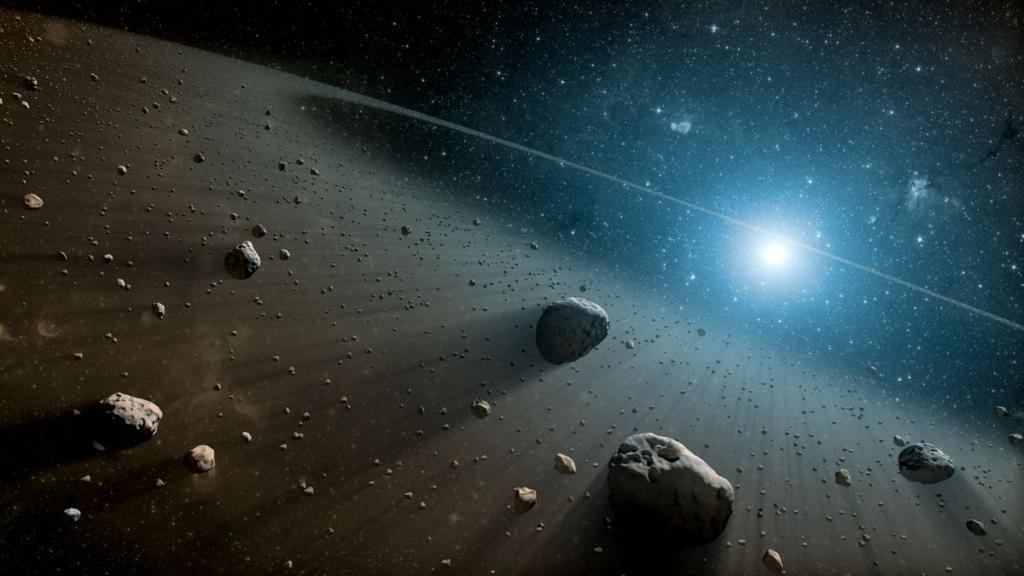
Over 1 million Interstellar Objects Detected Beyond Our Solar System
In a groundbreaking discovery, scientists have identified over 1 million interstellar objects, each approximately the size of the Statue of Liberty, drifting beyond our solar system. These objects, which are believed to originate from the Alpha Centauri star system, are a significant finding in the field of astrophysics, offering new insights into the mysteries of the universe.
According to recent research, the interstellar objects are thought to be fragments of a larger celestial body that was destroyed or disintegrated, scattering debris throughout space. This phenomenon is not unique to our solar system, with similar events occurring throughout the cosmos. However, the sheer number of objects detected in this instance is unprecedented, highlighting the vastness and complexity of the universe.
The Alpha Centauri star system, which is approximately 4.37 light-years from Earth, is of particular interest to astronomers. In about 28,000 years, Alpha Centauri will move closer to our solar system, potentially increasing the number of interstellar objects we encounter. This proximity could have significant implications for our understanding of the universe and our place within it.
As researchers continue to study these interstellar objects, they are also keeping a close eye on asteroid 2024 YR4, whose impact risk on Earth has nearly doubled. This asteroid, which is approximately 100 meters in diameter, is currently on a trajectory that could bring it close to our planet in the year 2024. While the chances of a direct impact are still low, astronomers are monitoring the situation closely to ensure the safety of our planet.
The Discovery of Interstellar Objects
The discovery of interstellar objects is a relatively recent phenomenon, with the first detection of a comet from outside our solar system occurring in 2017. Since then, scientists have identified numerous other interstellar objects, including asteroids, comets, and even fragments of exoplanet material.
One of the most significant challenges in detecting interstellar objects is their small size and low brightness. Many of these objects are too distant and faint to be detected by traditional astronomical methods, requiring specialized telescopes and detection software to identify.
The detection of interstellar objects is often a collaborative effort, involving scientists from around the world working together to analyze data and identify potential candidates. In this latest discovery, researchers used a combination of ground-based telescopes and space-based observatories to identify the interstellar objects.
Implications for Our Understanding of the Universe
The discovery of over 1 million interstellar objects has significant implications for our understanding of the universe. By studying these objects, scientists can gain valuable insights into the formation and evolution of celestial bodies, as well as the migration patterns of stars and planets.
This discovery also highlights the vastness and complexity of the universe, emphasizing the need for continued exploration and research. As we continue to push the boundaries of our knowledge, we are likely to uncover even more surprises and discoveries that will challenge our understanding of the cosmos.
Monitoring Asteroid 2024 YR4
In addition to the discovery of interstellar objects, astronomers are also closely monitoring asteroid 2024 YR4, which has a nearly doubled impact risk on Earth. This asteroid, which is approximately 100 meters in diameter, is currently on a trajectory that could bring it close to our planet in the year 2024.
While the chances of a direct impact are still low, astronomers are taking the situation seriously, as even a small asteroid can cause significant damage if it were to collide with our planet. By monitoring the asteroid’s trajectory and size, scientists can better predict its potential impact and take necessary precautions to ensure the safety of our planet.
Conclusion
The discovery of over 1 million interstellar objects, each approximately the size of the Statue of Liberty, is a significant finding in the field of astrophysics. By studying these objects, scientists can gain valuable insights into the formation and evolution of celestial bodies, as well as the migration patterns of stars and planets.
As we continue to explore the universe, we are likely to uncover even more surprises and discoveries that will challenge our understanding of the cosmos. Meanwhile, astronomers will continue to monitor asteroid 2024 YR4, ensuring the safety of our planet and paving the way for future discoveries.






